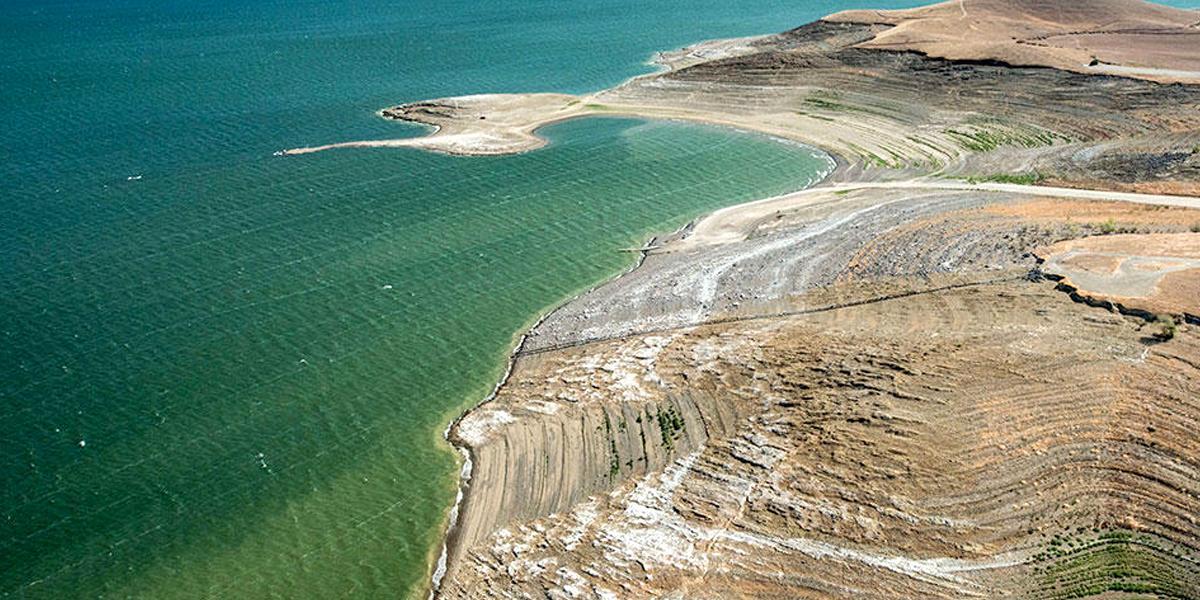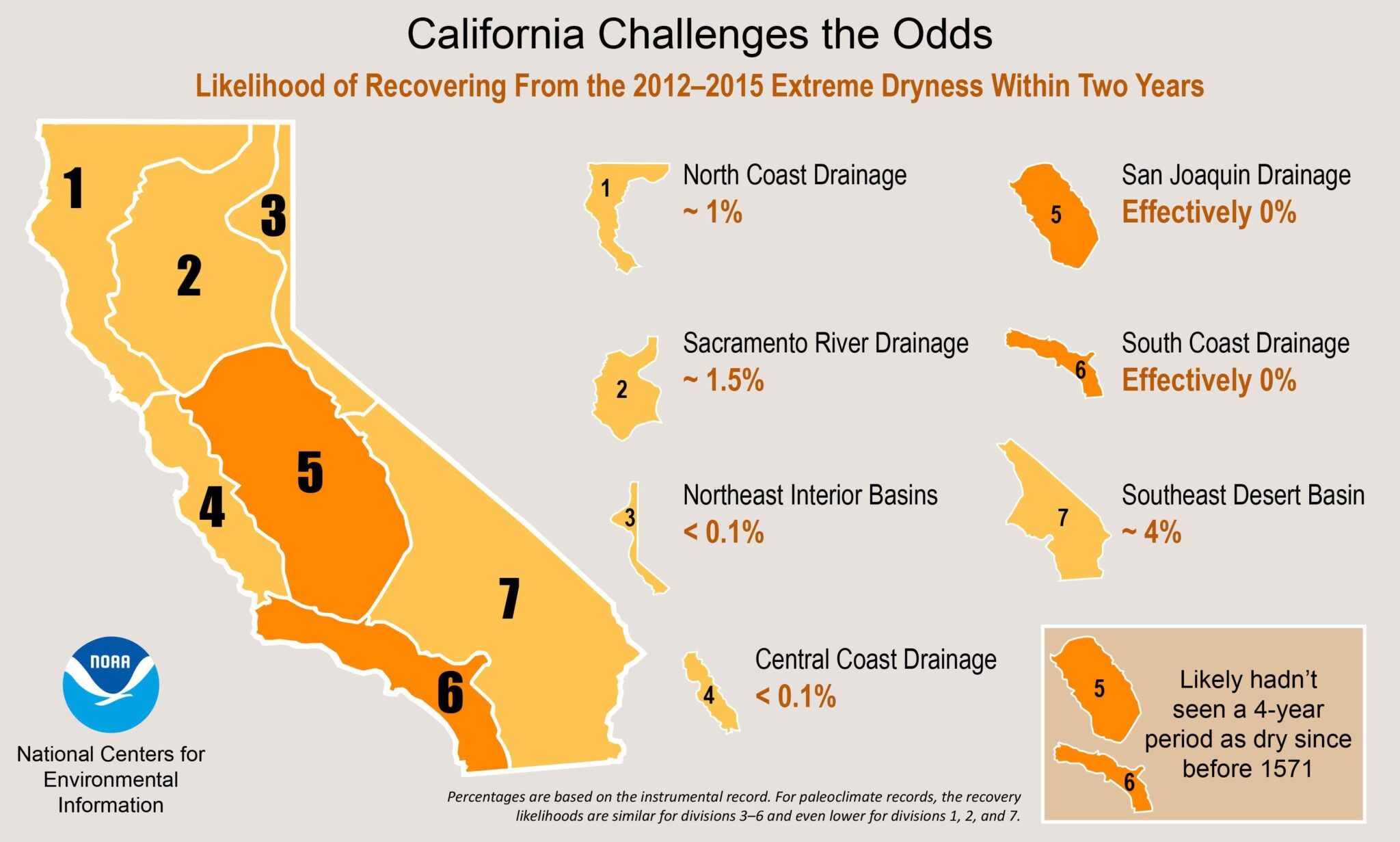

The California government may have declared the drought over, but scientists say the land still has a lot of catching up to do. A new study has found that California’s hardest hit areas will likely need several decades for their long-term average precipitation to recover back to normal levels.
The National Oceanic and Atmospheric Administration (NOAA) found that from 2011 to 2015, California experienced the driest four-year period in instrumental history, which dates back to 1895. It was the worst dry spell in 450 years with the Southern Central Valley and South Coast regions losing almost two full years of precipitation.
Unfortunately, even in these wet and blooming times for the state, the NOAA study calculated that it will take decades, even centuries, for the precipitation to recover in most areas. But, there might be a very tiny sliver of hope.
“The odds of the state completely recovering from its extreme dryness within two years are estimated at less than one percent,” said Eugene R. Wahl, lead author of the study. “But, that may be what’s happening right now if very wet conditions continue into spring.”
Scientists are taken aback by the rapid recovery in some parts of the state, and believe it could have been jumpstarted by the extreme El Niño from 2015 to 2016. This event alone has already boosted the precipitation levels by 80 percent. But, the record breaking wetness will have to continue through the end of the year to truly ensure a full recovery.

Even so, some parts of the state will recover more slowly than others. The Southeast Desert Basin division stands the best chance of recovering within two years, at about four percent. The San Joaquin Drainage and the South Coast Drainage divisions, however, have a zero percent chance of recovery within two years.
“These two regions include the agriculturally important Central Valley and the densely populated greater Los Angeles and San Diego metropolitan areas,” said Wahl. “So, the social and economic impacts are of particular importance there.”
The other four climate regions hover between a .1 percent chance and 1.5 percent chance. So, it seems, one wet season will not be enough to bring the entire state back to life. Still, decades of recovery is better than a megadrought, which scientists still fear could happen with climate change raising temperatures in the region.

 233k
233k  41k
41k  Subscribe
Subscribe 